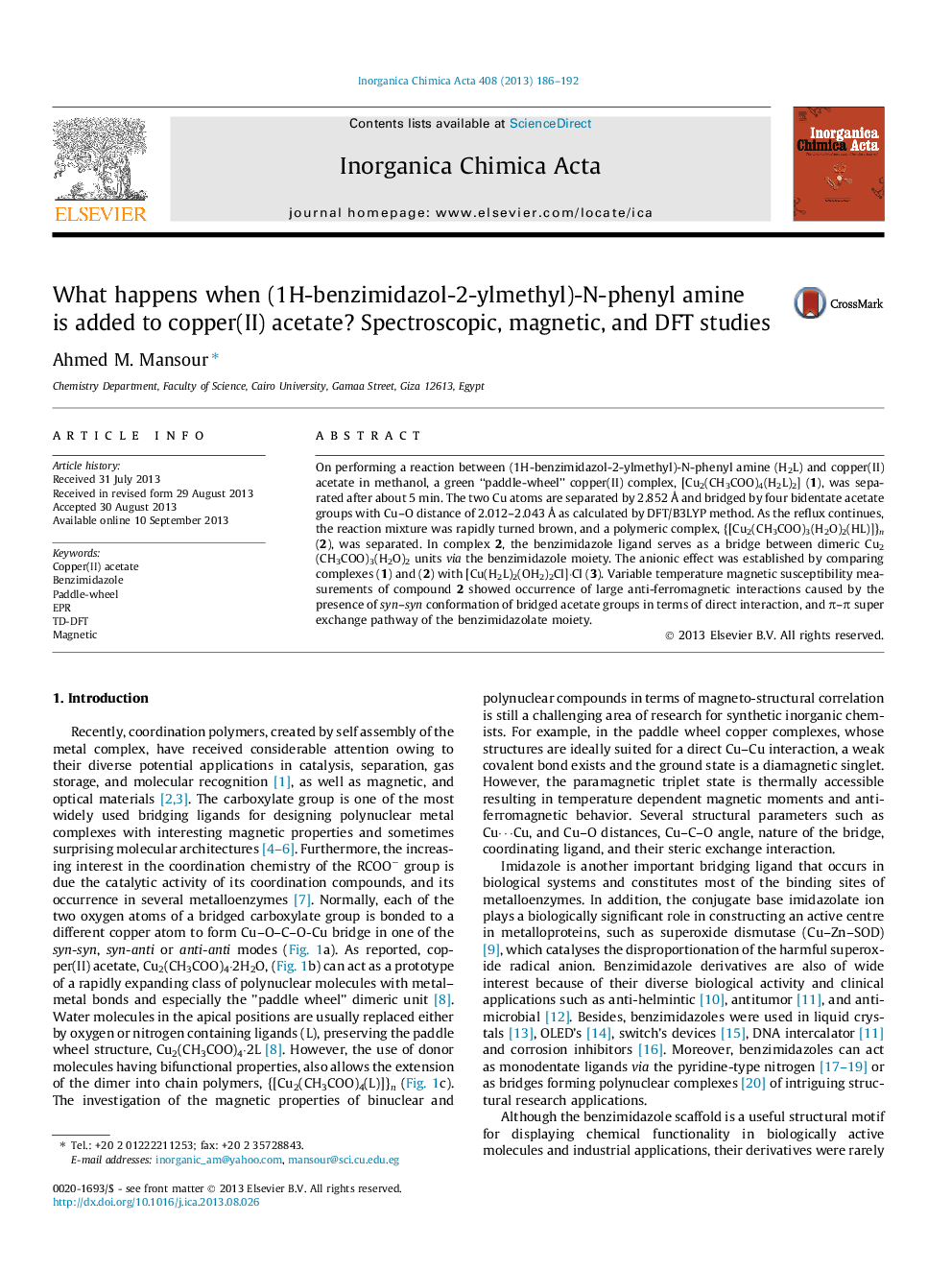| Article ID | Journal | Published Year | Pages | File Type |
|---|---|---|---|---|
| 1310230 | Inorganica Chimica Acta | 2013 | 7 Pages |
•Binuclear and polynuclear CuII acetate complexes were prepared.•Strong anti-ferromagnetic behavior was observed.•Presence of another bridging ligand altered the magnetic behavior.•Anionic effect was established by comparison with the chloro complex.•Correlation between experimental and theoretical data was performed.
On performing a reaction between (1H-benzimidazol-2-ylmethyl)-N-phenyl amine (H2L) and copper(II) acetate in methanol, a green “paddle-wheel” copper(II) complex, [Cu2(CH3COO)4(H2L)2] (1), was separated after about 5 min. The two Cu atoms are separated by 2.852 Å and bridged by four bidentate acetate groups with Cu–O distance of 2.012–2.043 Å as calculated by DFT/B3LYP method. As the reflux continues, the reaction mixture was rapidly turned brown, and a polymeric complex, {[Cu2(CH3COO)3(H2O)2(HL)]}n (2), was separated. In complex 2, the benzimidazole ligand serves as a bridge between dimeric Cu2(CH3COO)3(H2O)2 units via the benzimidazole moiety. The anionic effect was established by comparing complexes (1) and (2) with [Cu(H2L)2(OH2)2Cl]·Cl (3). Variable temperature magnetic susceptibility measurements of compound 2 showed occurrence of large anti-ferromagnetic interactions caused by the presence of syn–syn conformation of bridged acetate groups in terms of direct interaction, and π–π super exchange pathway of the benzimidazolate moiety.
Graphical abstractComplex 1 can be modular building blocks in self-assembly reactions affording a polymeric complex 2 by increasing the reaction time.Figure optionsDownload full-size imageDownload as PowerPoint slide
